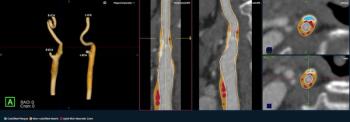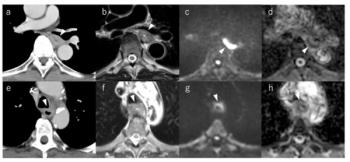
Dual-Energy Spectral in CT Aids in Diagnosis of Acute Gangrenous Appendicitis
Imaging confirms or excludes the presence of gangrenous appendicitis with high sensitivity and specificity.
Dual-energy CT with virtual monoenergetic and iodine overlay imaging accurately confirms or excludes the presence of gangrenous appendicitis, according to a study published in the
Researchers from Canada performed a retrospective study to determine if the use of dual-energy spectral techniques in CT can improve accuracy in the diagnosis of acute gangrenous appendicitis.
Related article:
A total of 209 patients with a pathologic diagnosis of appendicitis were included in the study. Two board-certified abdominal radiologists reviewed 120-kV simulated images, 40-keV virtual monoenergetic images, and color-coded iodine overlay images.
The results showed 44 patients (21.0%) had histopathologic results positive for gangrenous appendicitis. Other findings were:
All cases of gangrenous appendicitis had true-positive results of virtual monoenergetic and iodine overlay imaging. There were no false-negative results of virtual monoenergetic or iodine overlay imaging.
The researchers concluded that in cases of suspected appendicitis, dual-energy CT that includes virtual monoenergetic and iodine overlay imaging is accurate for confirming and excluding the presence of gangrenous appendicitis with high sensitivity and specificity.
Newsletter
Stay at the forefront of radiology with the Diagnostic Imaging newsletter, delivering the latest news, clinical insights, and imaging advancements for today’s radiologists.






























